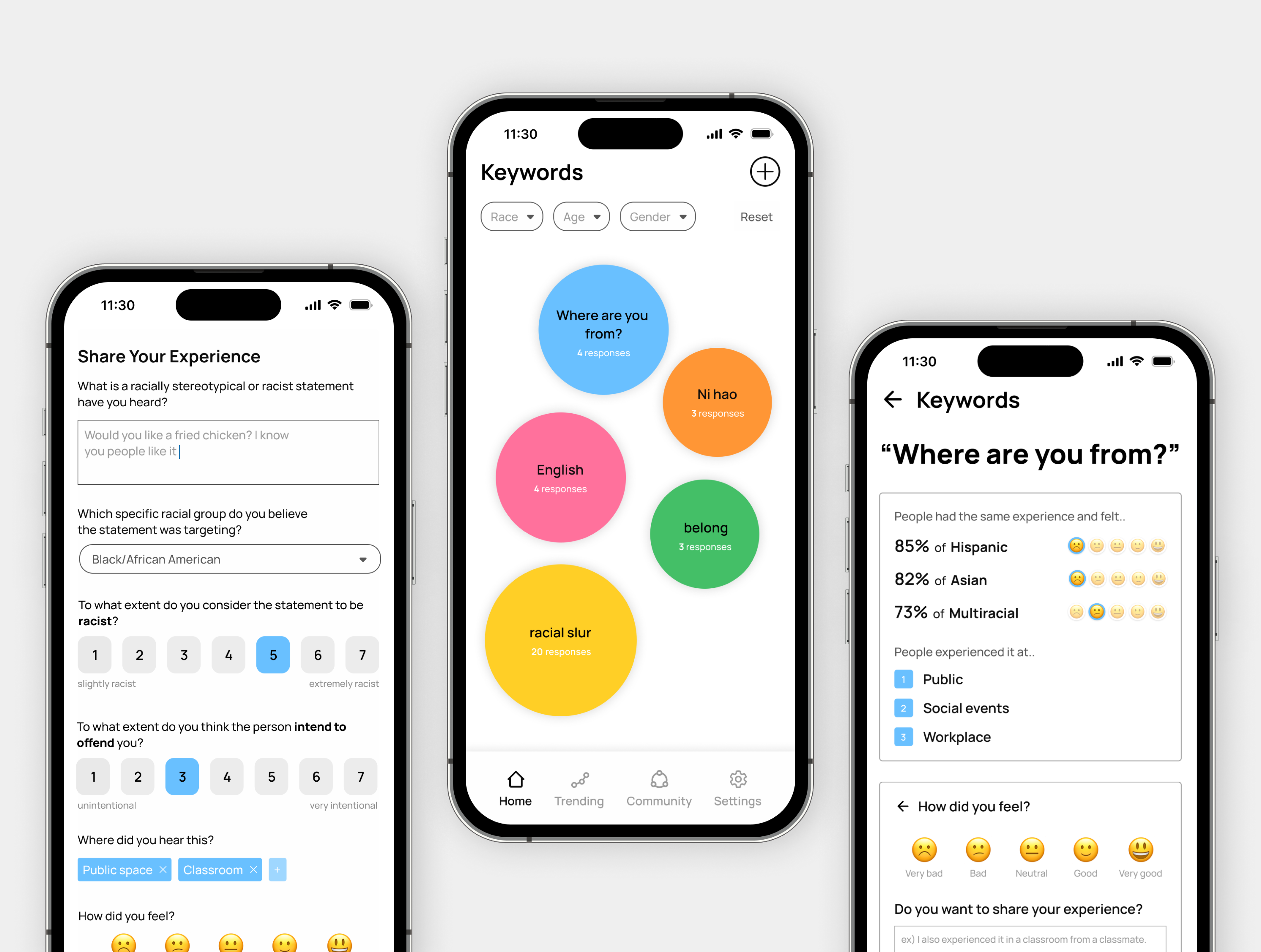
This project originated from our team’s personal experiences as Asians living in the United States and was initiated with the goal of creating a more inclusive society and technology. We focused on developing a user-centered solution by incorporating feedback from participants with diverse racial backgrounds. The project was accepted to the CHI 2024 Student Design Competition, with only twelve teams selected and a 28% acceptance rate.
Racial microaggressions are subtle, often unintentional, discriminatory comments that convey negative assumptions about a person’s race or ethnicity. These microaggressions contribute to creating an unwelcoming environment for racial minorities, making it crucial to address in the context of future technology design. However, detecting and understanding microaggressions remains challenging due to their subtlety.
Methodology
To gain a deeper understanding of people’s experiences with racism and microaggressions, we employed a mixed-methods approach. We conducted in-depth interviews with four participants from diverse racial backgrounds to hear their stories firsthand. Additionally, we surveyed 43 individuals to gather broader insights into their personal experiences with racial discrimination as well as their feedback on our initial design concept.
In-depth Interview Insights
Participants shared how community provided a valuable sense of support and increased awareness of racial microaggressions, highlighting the importance of an online community for sharing stories and fostering understanding.
Survey Insights
In align with the interview findings, our survey highlights the need for a safe, anonymous space where people can share their experiences. These findings also informed our decision to focus on verbal forms of microaggressions.
What forms of racism have you experienced?
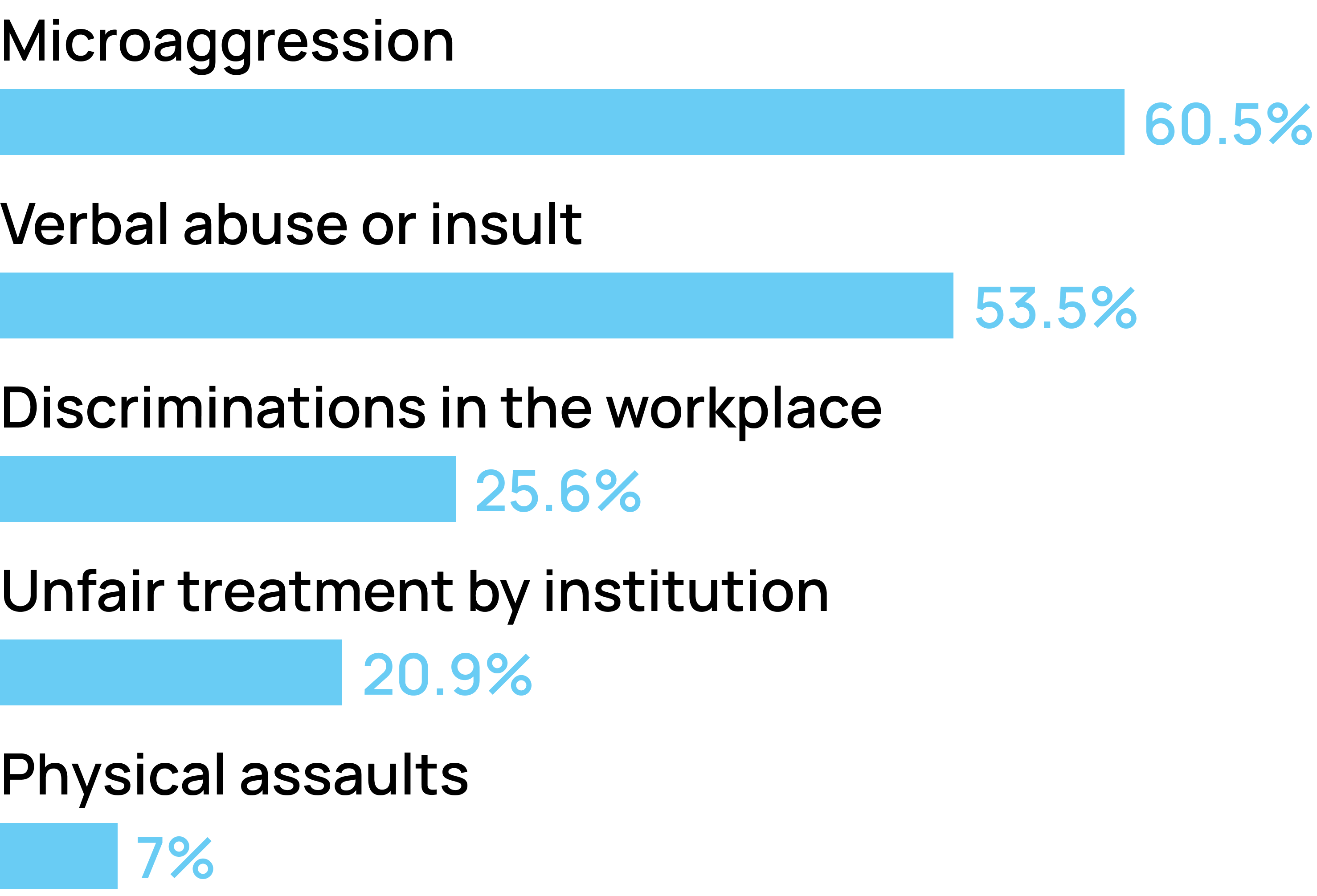
How do you typically respond to incidents of racism?
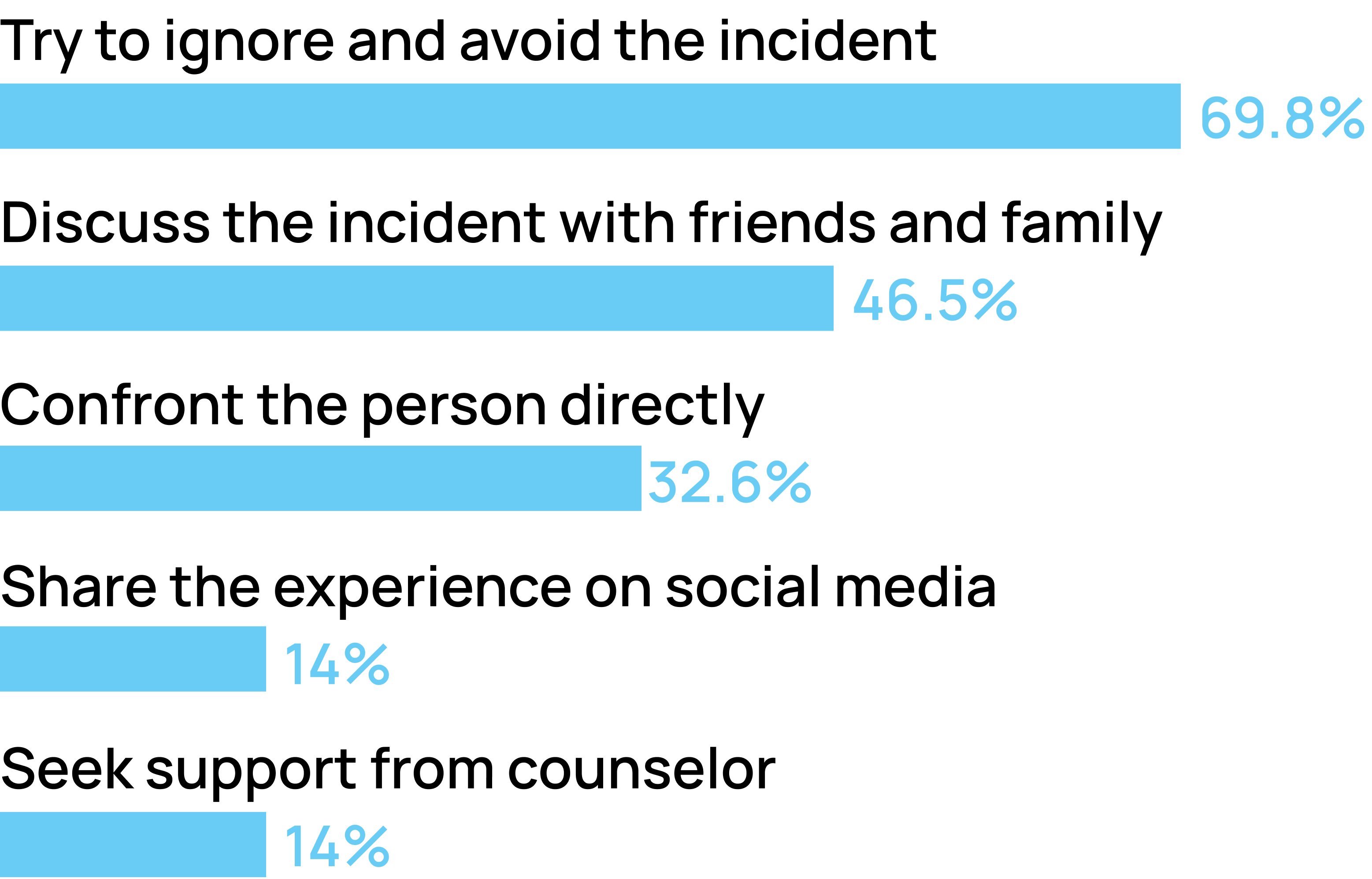
What is racially stereotypical words or sentences have you heard?
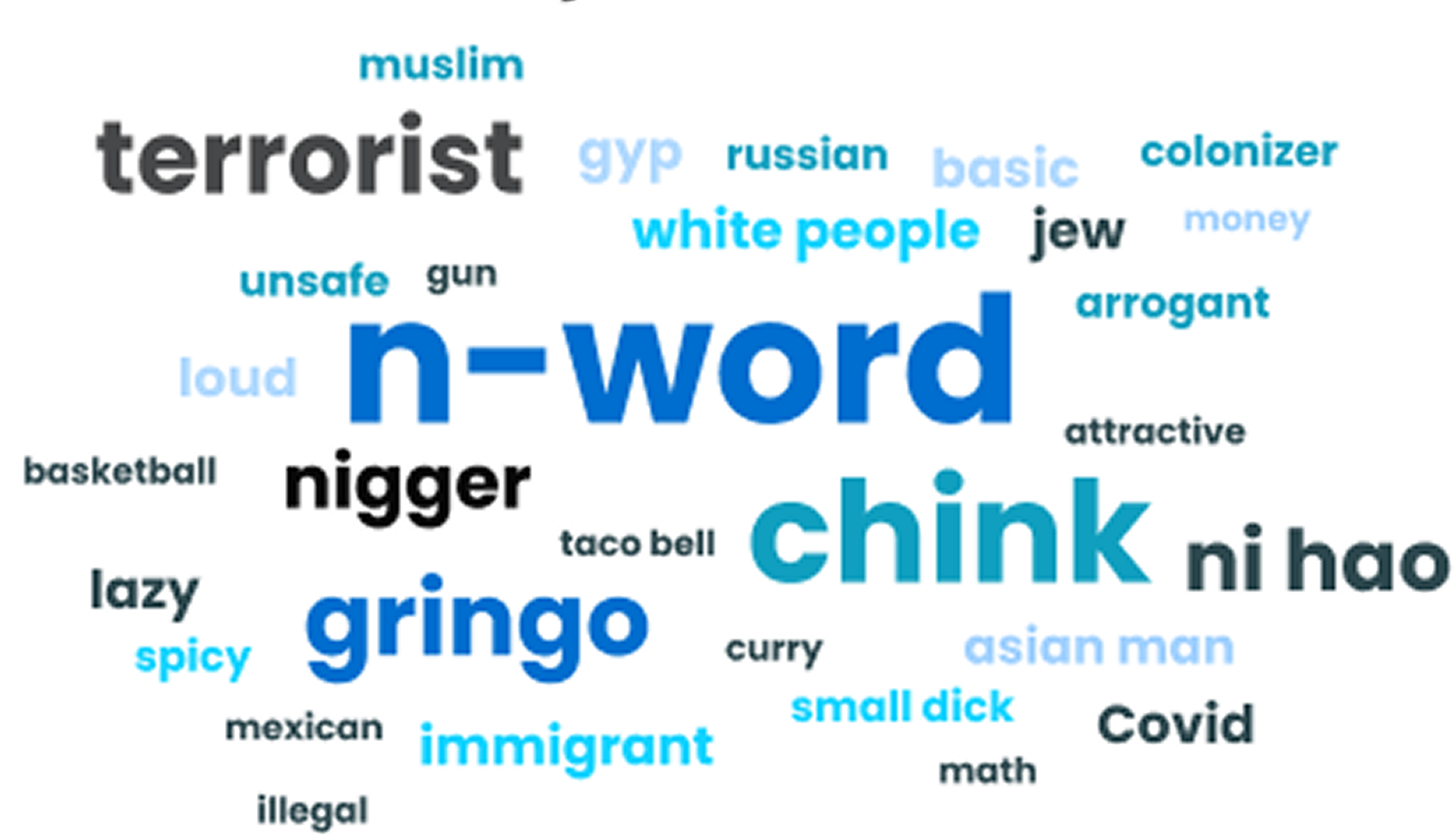
We also gathered feedback on two different versions of early wireframes for an online platform designed for users to report their experiences. Option A emphasizes keywords for each race. Option B focuses solely on the keywords. 60% of 43 respondents preferred Option B.
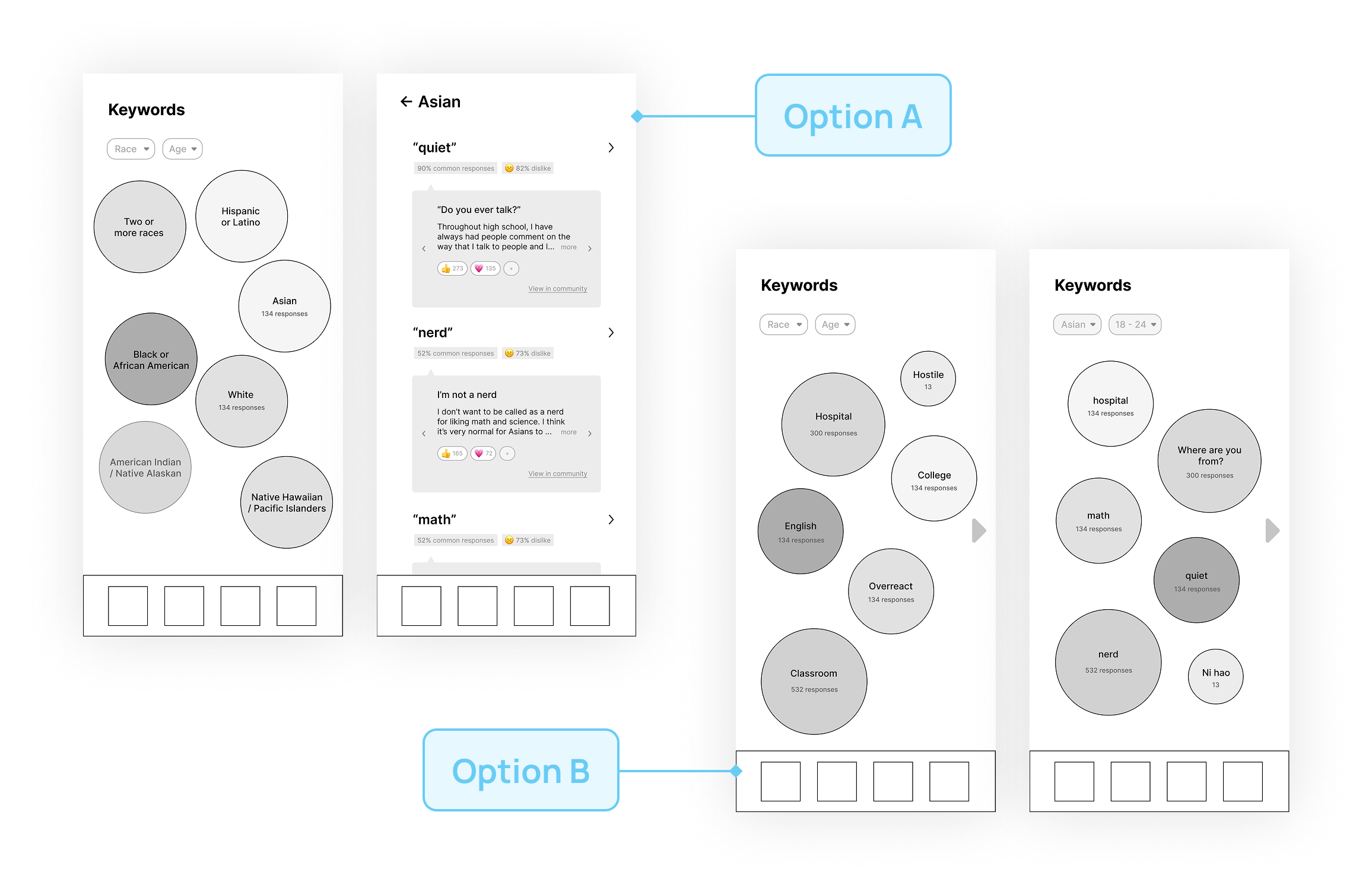
Design Requirements
Based on our findings, we derived the following design requirements:
Inclusify collects reports on racist statements from users.
They are asked to identify the target of the statement and rate its level of racial prejudice on a scale of 1 to 7.
Users also create tags to indicate where the instance
occurred. These reports can be utilized as valuable
datasets to enhance speech-based interface design in the future.
The keywords are extracted from users’ responses and are implemented into a word cloud. The word cloud is visualized
into text bubbles, with each bubble displaying a keyword.
These bubbles can be filtered by demographic data and are scalable depending on the number of related reports.
By clicking a bubble, users can access the summary and insight of a keyword. The experiences of different racial groups and locations of frequent occurrence are provided in this page with the emoji Likert scale.
Users can report their experiences related to the keyword as well. Related community posts are shown on the bottom to display relevant experiences.
In the community page, users can share their positive encounters with diversity and inclusion under a daily prompt. Upcoming events shown in the Info section fosters diverse communities, allowing users to create meaningful connections beyond the app.
Users share their encounters with community posts, empathizing and advocating for people across diverse backgrounds.
Method & Process


We conducted online user tests with 26 participants to evaluate the effectiveness of Inclusify in enhancing public awareness and usability. Before the test, participants were asked to rate the level of racial prejudice in five different racist expressions. After interacting with the prototype, they were asked to reevaluate the level of prejudice in the same expressions during the post-test. Usability was assessed using an adapted SUS (System Usability Scale).
Result
